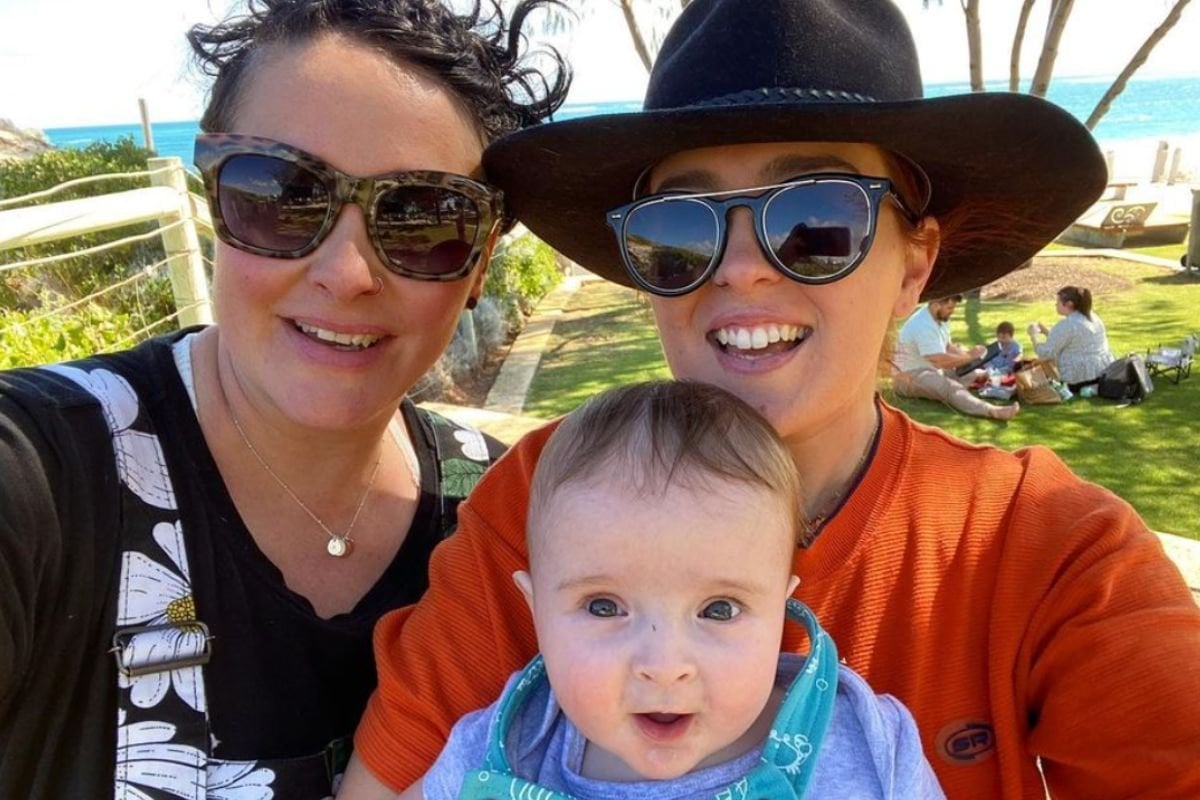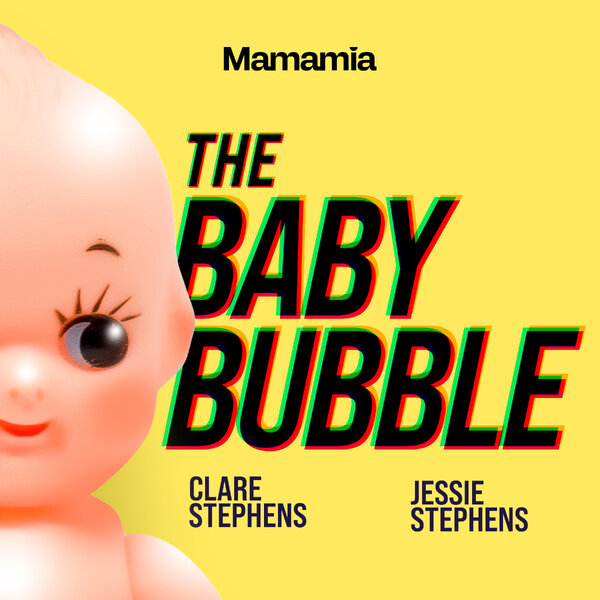
Jessie Backshall will never forget the moment her world turned upside down.
What should have been a routine 16-week scan for her wife Patricia's pregnancy became the start of a journey that would challenge everything they thought they knew about parenthood.
"We walked away from that initial appointment feeling lost," Jessie told What's the Jam via Yahoo News Australia. "We wanted this little boy so badly, but we also wanted to make sure he had a reasonable quality of life."
 Image: Instagram/jessie_leehb.
Image: Instagram/jessie_leehb.The couple had just learned that their unborn son had spina bifida — a condition roughly 50 Australian children are diagnosed with each year, normally during the 18-20 week ultrasound, and more than 5,000 adults are currently living with it.
As they sat in bed that night, tears streaming down their faces, Jessie turned to Patricia and asked the question that would set their path forward: "Can we keep him?"
Patricia's simple answer — "yes" — was anything but simple in its implications.
Jessie told the publication, "There was no going back from that point. We were going to do everything in our power to give him the best chance."
The days that followed were a whirlwind of research and phone calls.
Jessie, determined to give their son the best chance possible, scoured the internet for information and reached out to hospitals across Australia. Her persistence paid off when she discovered a revolutionary in-utero surgery that could potentially mitigate the effects of spina bifida, which occurs when the spine and spinal cord don't form properly.
The surgery, pioneered by Vanderbilt University Hospital in the US, allows doctors to intervene during a small window in the mother's pregnancy — between 22 and 25 weeks — in order to help minimise damage to the child's spinal cord.
The 2.5-hour procedure involves anaesthetising the mother and baby, and opening the womb to allow access to the baby's back. The neurosurgeon, with the assistance of a plastic surgeon, closes the gap. Once that's complete, the amniotic fluid is replaced and the womb and abdomen are closed back up.
The risks were significant. "We were told of the risks and advised the biggest is preterm labour. They told us If Trish's waters broke during the operation, they would not resuscitate our baby. Every hope we had was on this surgery," Jessie shared.
"[But] I'd seen the difference between the kids who had closure surgery post-birth and those who had it in utero and it was too big to ignore," Jessie explained.
In January 2023, their son Otis was "born" for the first time.
"Trish's uterus was taken out of her belly, Otis' back and bottom were pushed to the top, and an incision was made to close the hole in his spine," Jessie recounted. For six nerve-wracking hours, a team of skilled surgeons worked to give Otis a fighting chance.
Three months later, Otis made his official entrance into the world, bearing a perfectly healed scar on his back. But Otis' journey was far from over. At five months old, he underwent another surgery to place a shunt in his brain to manage hydrocephalus, a common complication of spina bifida.
Earlier this year, the shunt malfunctioned. "He went limp in my arms," Jessie recalled. "I couldn't wake him and his breathing was shallow. I felt as though time had stood still."
Once again, medical intervention saved Otis' life. And once again, he bounced back with a resilience that left his mothers in awe.
Now 14 months old, Otis is not just surviving — he's thriving.
"Otis proved the statistics wrong," Jessie said. "He's been reaching all his milestones on time and was crawling by a 'normal' age. The future for Otis is his for the taking.
"We were told it could be another year before he walks. We were told he will need walking assistance. We’ve been told a lot of things and Otis loves to prove them all wrong. We know he will walk in his own time and we know we will be by his side every step of the way."
The couple's story is not unique in its challenges, but it is extraordinary in its outcome.
Their experience echoes that of other Australian families who have benefited from this groundbreaking procedure, which was first performed in Australia at Brisbane's Mater Hospital in 2016. Dr Glenn Gardener, the pioneering neonatal surgeon behind the Australian trials, has observed promising results.
"Twice as many children will be able to walk and you halve the number of children that have problems with fluids on the brain. So there are really significant lifelong benefits by having this surgery. Of course, you have to balance with that the risks of the procedure, so it's not for everyone," he told Mamamia previously.
For families like Jessie and Trish's, these advancements offer more than just medical hope. They offer a chance at a future they once thought impossible. And as the pair watch their son defy expectations daily, they're driven to share their story.
"I wanted to provide a real story and ongoing updates so other parents could feel seen on the days they struggle," Jessie explained.
"I also wanted to shed light on spina bifida as a whole, how misunderstood and under-researched it is, and how life doesn't look like the miserable picture you're painted on diagnosis day."
Feature Image: Instagram/jessie_leehb.
Stories to indulge in, sent to your inbox every weekend.

